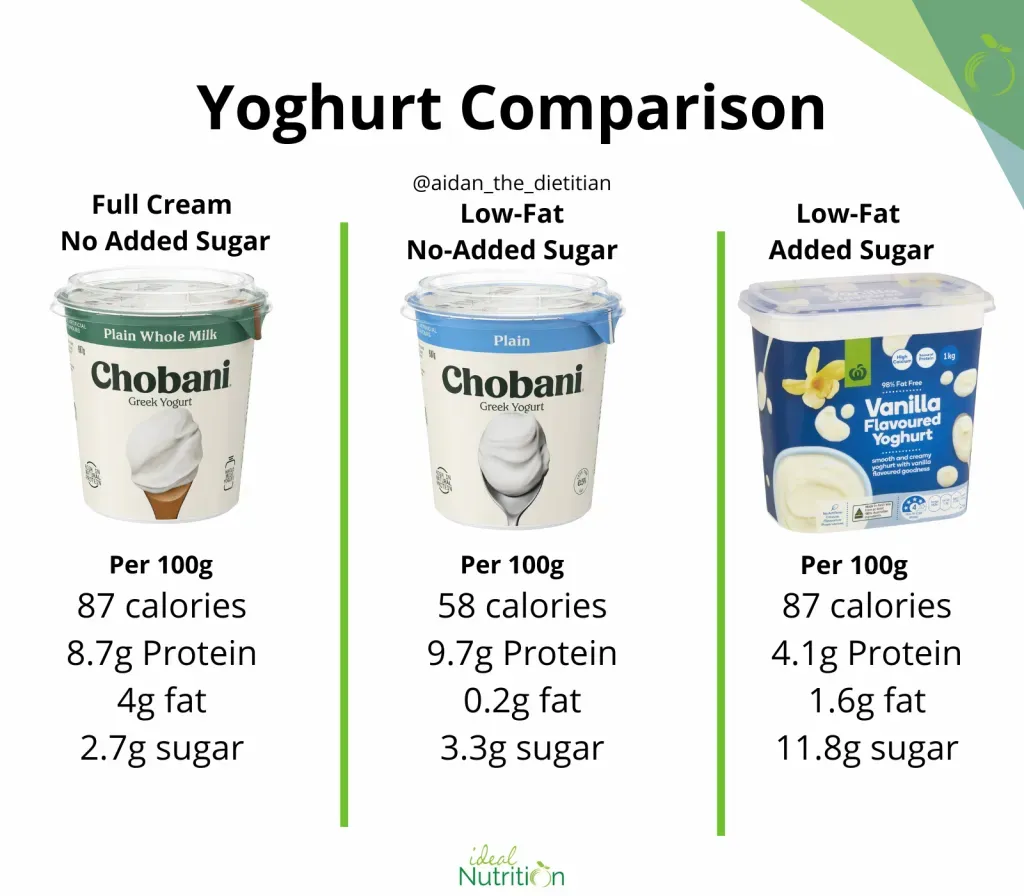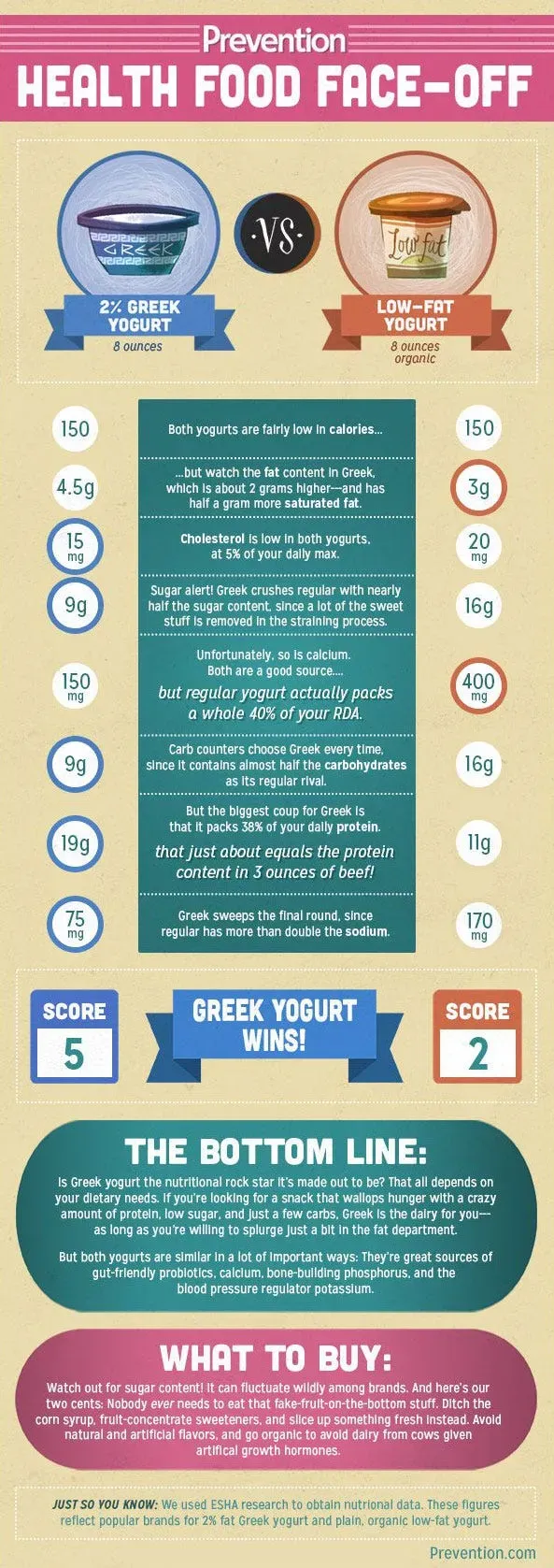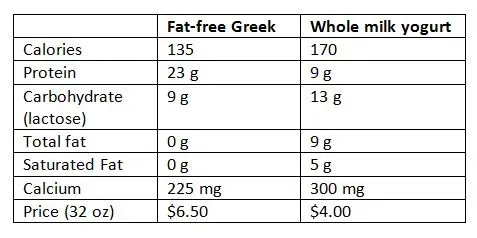Table of Contents
For years, diet advice hammered home one message: fat is bad, low-fat is good. This sent many of us reaching for the low-fat or non-fat options in the dairy aisle, including yogurt. It seemed like a no-brainer for health and weight management.
Understanding the Basics: What's the Difference Between FullFat and LowFat Yogurt?
Understanding the Basics: What's the Difference Between FullFat and LowFat Yogurt?
Where the Fat Comes From (or Doesn't)
Alright, let's strip this down to the studs. When you talk about the difference between full-fat and low-fat yogurt, you're essentially talking about the milk they start with.
Full-fat yogurt is made from whole milk.
That means it contains all the natural milk fat that comes straight from the cow.
Low-fat or non-fat versions, on the other hand, begin with milk where some or most of that fat has been skimmed off.
It's like deciding whether to leave the cream on top or scoop it off before making your yogurt.
The Skimming Process and What It Leaves Behind
So, how do they get the fat out?
Dairy processors run the milk through a centrifuge.
This machine spins the milk really fast, separating the lighter fat from the heavier liquid part.
Depending on how much fat they remove, you get different types of milk: reduced-fat (like 2%), low-fat (1%), or non-fat (skim).
Yogurt made from these milks carries those lower fat percentages.
Full-fat yogurt typically checks in around 3.5% milk fat or higher, sometimes much higher in rich styles like Greek or Icelandic Skyr made from whole milk.
Yogurt Type | Starting Milk | Typical Fat Content |
|---|---|---|
Full-Fat | Whole Milk | 3.5% + |
Low-Fat | 1% or 2% Milk | 1-2% |
Non-Fat | Skim Milk | < 0.5% |
Beyond the Fat: Texture, Taste, and Additives
Removing fat isn't just about a number on the nutrition label.
Fat carries flavor.
It also contributes significantly to texture, giving full-fat yogurt that smooth, creamy mouthfeel we often crave.
When you take the fat out, you lose some of that richness and body.
Manufacturers sometimes add thickeners or stabilizers to low-fat versions to try and mimic the texture of their full-fat cousins.
Crucially, they often add sugar or artificial sweeteners to compensate for the loss of flavor and palatability that fat provides.
This is a key point when considering if low fat or full fat yogurt is better for you – it's not just the fat content that changes.
Nutritional Showdown: Is Low Fat or Full Fat Yogurt Better For You on Paper?
Nutritional Showdown: Is Low Fat or Full Fat Yogurt Better For You on Paper?
The Calorie and Fat Count: The Old Scorecard
let's look at the scoreboard as it was traditionally kept. On paper, low-fat yogurt seems like the clear winner if you're just chasing lower numbers.
A standard cup of non-fat Greek yogurt, for instance, might have around 100-130 calories and practically zero grams of fat.
Compare that to a cup of whole-milk Greek yogurt, which could easily hit 200-250 calories and anywhere from 8 to 15 grams of fat, including saturated fat.
For decades, official dietary guidelines told us to slash fat, especially saturated fat, to keep our hearts healthy and our waistlines in check.
Based purely on calories and total/saturated fat grams listed on the label, low-fat versions appear to be the "healthier" option in this narrow view.
It's the reason they flooded the market and became the default choice for so many.
Beyond the Grams: Protein, Vitamins, and Sugar Surprises
But focusing only on fat grams is like judging a book by its cover, and a pretty boring cover at that. While low-fat yogurt wins the "least fat" contest, the picture gets more interesting when you look at everything else.
Protein content, for example, is often quite similar between low-fat and full-fat versions of the same style (like Greek yogurt). You can get 18-20 grams of protein from either.
However, fat plays a role in absorbing certain vitamins, specifically the fat-soluble ones: A, D, E, and K. Full-fat yogurt contains these vitamins naturally, and the fat helps your body actually use them.
Low-fat versions might be fortified with Vitamin D, but without the fat, absorption isn't as efficient.
Here's a kicker: to make up for the flavor and texture lost when fat is removed, manufacturers often dump sugar into low-fat and non-fat yogurts.
Check labels closely; a "healthy" low-fat fruit-on-the-bottom yogurt can easily pack more sugar than a scoop of ice cream.
So, when asking is low fat or full fat yogurt better for you, consider the whole package – including the stuff added back in.
Nutrient/Factor | Full-Fat Yogurt (Plain) | Low-Fat/Non-Fat Yogurt (Plain) | Potential Additives |
|---|---|---|---|
Calories | Higher | Lower | Often minimal |
Total Fat | Higher | Lower (1-2% or <0.5%) | Minimal fat added |
Saturated Fat | Higher | Lower | Minimal saturated fat added |
Protein | Similar (especially in Greek/Skyr) | Similar (especially in Greek/Skyr) | None significant |
Fat-Soluble Vitamins (A, D, E, K) | Present naturally (better absorbed) | Lower naturally (may be fortified, less absorption) | May be added (fortification) |
Sugar (Added) | Typically Low (in plain versions) | Often High (especially in flavored versions) | Sugar, artificial sweeteners, thickeners |
Beyond the Numbers: How FullFat Yogurt Might Keep You Fuller and Happier
Beyond the Numbers: How FullFat Yogurt Might Keep You Fuller and Happier
The Satiety Signal: Why Fat and Protein Matter
let's talk about that feeling after you eat something truly satisfying. It's not just about stuffing your face; it's a complex dance of signals between your gut and your brain. Both full-fat and low-fat yogurt contain protein, especially styles like Greek or Skyr, and protein is a well-known champion of satiety. It takes longer to digest than carbs and sends signals that tell your brain you've had enough.
But fat? Fat is the other major player in the satiety game. It also slows down digestion, meaning food hangs around in your stomach longer. This sustained presence helps keep those hunger pangs at bay. Think about eating a piece of plain white bread versus a piece of bread with butter. The butter adds fat, and you're less likely to want another slice immediately. Full-fat yogurt brings both protein *and* fat to the party, creating a powerful one-two punch for keeping you feeling full and content for hours.
Feeling full involves several factors:
- Protein content: Slows digestion, signals satiety hormones.
- Fat content: Also slows digestion, adds to calorie density.
- Meal volume: Simply filling your stomach triggers stretch receptors.
- Hormonal responses: Ghrelin (hunger hormone) decreases, leptin (satiety hormone) increases.
- Eating experience: Texture, taste, and enjoyment play a role in satisfaction.
Taste, Texture, and Taming Cravings
Beyond the biological signals, there's the simple fact that full-fat yogurt tastes darn good. It's creamy, rich, and feels substantial. This isn't just about pleasure; it's about satisfaction. When you eat something that genuinely satisfies your palate and stomach, you're less likely to go searching for more food shortly after. You know the feeling – you eat something "light" or "diet," and 30 minutes later, you're rummaging through the pantry for chips or cookies.
Low-fat yogurt, especially plain, can sometimes feel a bit thin or even watery. This lack of richness can leave you feeling less satisfied overall, even if you got a good dose of protein. Adding fruit or honey helps the taste, but often piles on the sugar. Choosing full-fat yogurt, particularly the plain variety, might mean you eat a smaller portion but feel more content, potentially reducing the urge to snack on less healthy things later. So, when asking is low fat or full fat yogurt better for you, consider if the "lower calorie" option actually leads you to eat more calories elsewhere.
Making Your Choice: Deciding If Low Fat or Full Fat Yogurt Is Better For Your Goals
Making Your Choice: Deciding If Low Fat or Full Fat Yogurt Is Better For Your Goals
Considering Your Diet and Goals
so we've seen that low-fat yogurt isn't automatically the health hero it was once painted as, and full-fat isn't the villain. Now comes the tricky part: figuring out what works for you. Asking "is low fat or full fat yogurt better for you?" doesn't have a universal answer. If you're tracking calories strictly and find that a small serving of low-fat plain yogurt with some berries is genuinely satisfying and fits your calorie budget without leading to sugar cravings later, then maybe that's your jam. However, if you find low-fat versions leave you hungry soon after, or you're constantly adding spoonfuls of jam or honey to make it palatable, the extra calories and sugar from those additions might outweigh the initial calorie saving compared to a smaller, more satisfying portion of full-fat yogurt.
- Consider your overall calorie needs.
- Think about how different foods make you feel (satiety).
- Evaluate your sugar intake from other sources.
- Factor in your taste preferences and how they affect your choices.
- Look at the ingredient list for added sugars or thickeners.
So, Is Low Fat or Full Fat Yogurt Better for You?
After sifting through the nutritional details and considering how these yogurts actually fit into a daily diet, it's clear there's no single champion universally applicable to everyone. The old mantra that low-fat is always superior holds less water now. Full-fat yogurt often brings more satiety and less added sugar to the table, potentially helping manage appetite without the blood sugar rollercoaster. Low-fat versions, while lower in calories and saturated fat, sometimes compensate with sweeteners and might leave you rummaging for snacks sooner. Your personal health goals, dietary needs, and simply what you find satisfying will ultimately dictate which tub you reach for. The key isn't declaring one definitively 'better,' but understanding the trade-offs and making an informed choice that works for you.
